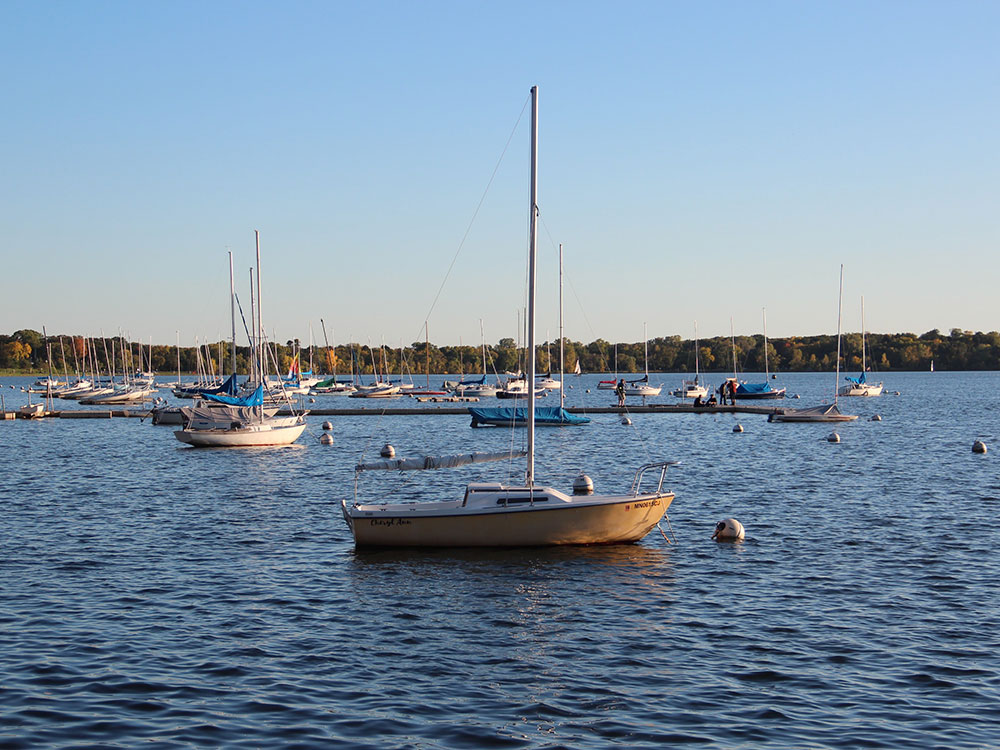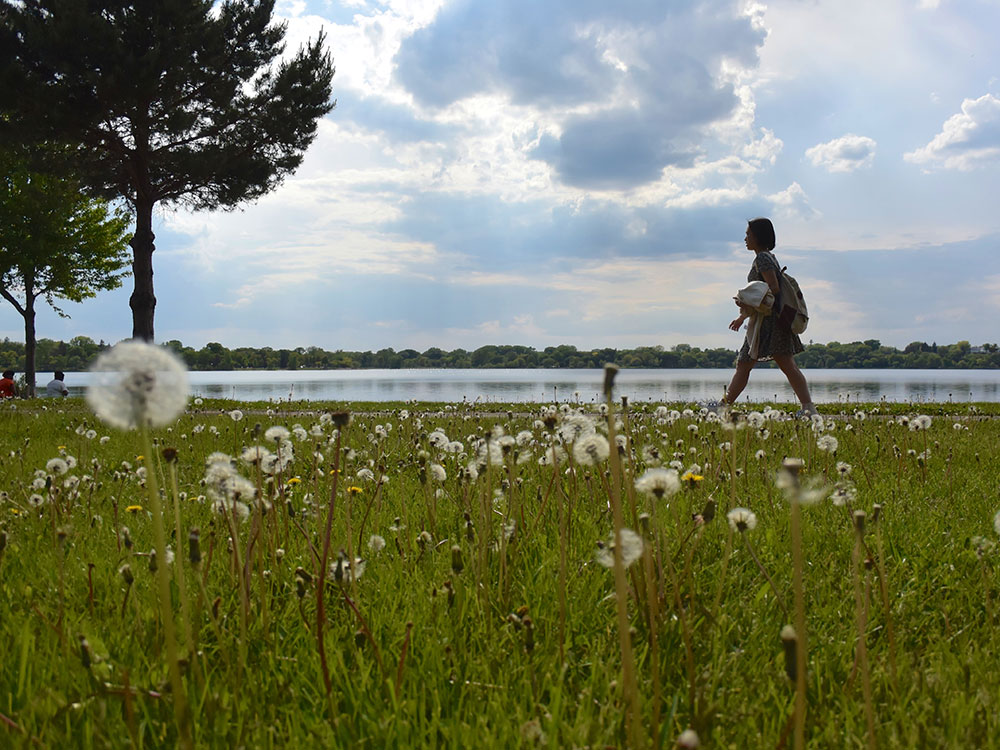Largest lake in Minneapolis and part of the city's Chain of Lakes is surrounded by city park land and circled by bike and walking trails
General Information
How to Get There
Overview
Bde Maka Ska (previously known as Lake Calhoun) is the largest lake in Minneapolis, Minnesota, and part of the city's Chain of Lakes. Surrounded by city park land and circled by bike and walking trails, it is popular for many outdoor activities. The lake has an area of 401 acres (1.62 km2) and a maximum depth of 87 feet (27 m).
The lake is part of the Grand Rounds National Scenic Byway, connecting with Lake of the Isles on the northeast, Cedar Lake and Brownie Lake on the northwest, and Lake Harriet on the south. The Minneapolis Park and Recreation Board trail system has a 3.4-mile (5.5 km) trail around the lake for bicyclists and skaters and a 3.2-mile (5.1 km) trail around it for pedestrians. Both of these trails connect to the larger trail system via connections to Lake of the Isles and Lake Harriet. In addition, the Midtown Greenway Trail is located just north of the lake and Lake Street. The lake itself is popular for canoeing, kayaking, and windsurfing, and it has three swimming beaches.
The three beaches are North Beach on the north side of the lake, 32nd Beach on the east, and Thomas Beach on the south. There is Bde Maka Ska Park and surrounding park land offers parking, picnicking, volleyball, and athletic fields. It is also home of sailing, hosting the Calhoun Yacht Club, the Minneapolis Sailing Center, as well as local high school teams and the University of St. Thomas Sailing Team.
The Dakota originally called the lake Mde Maka Ska (standardized Lakota/Dakota spelling Bdé Makhá Ská) meaning Lake White Earth, or Lake White Bank, a name that probably was given by the Ioway who inhabited the area until the 16th century. Another Dakota name for the lake may have been Mde Med'oza, which was the name initially adopted by settlers, either as Lake Medoza or in translation as Loon Lake. The Dakota also described it as Heyate Mde, meaning the set back lake.
The lake contains black crappie, bluegill, bowfin, common carp, hybrid sunfish, largemouth bass, northern pike, pumpkinseed, tiger muskellunge, walleye, white sucker, and yellow perch.
This article uses material from the Wikipedia article "Bde Maka Ska", which is released under the Creative Commons Attribution-Share-Alike License 3.0

